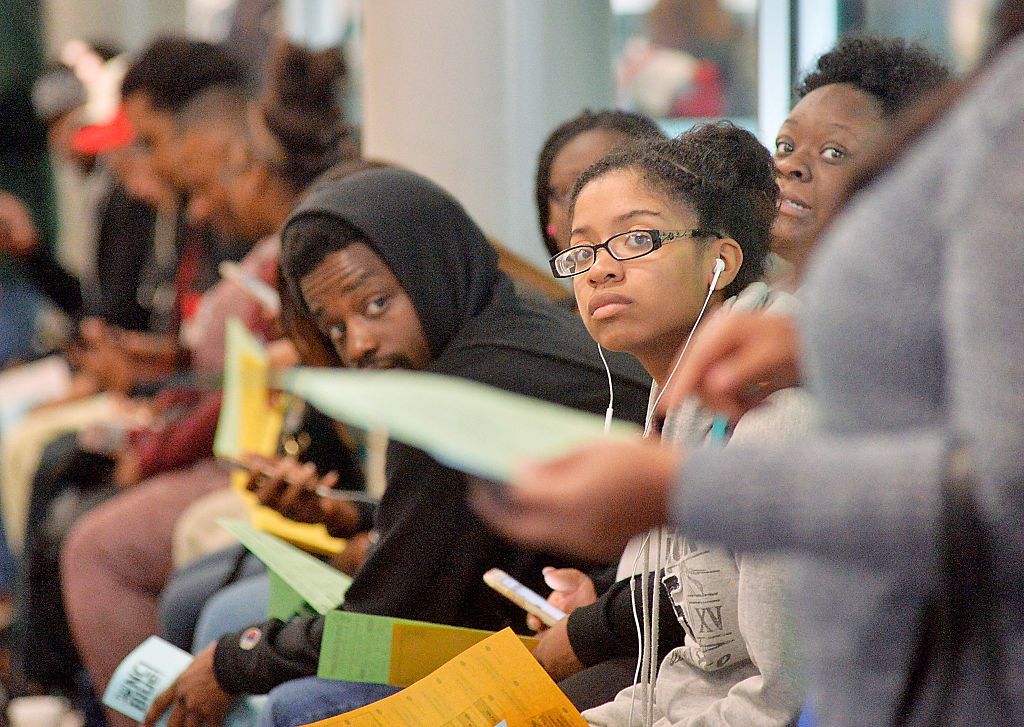SAN BERNARDINO, CA—- San Bernardino City Unified School District (SBCUSD) is proud to recognize the 22 salutatorians graduating in the Class of 2022. Earning the rank of salutatorian is a sign that a student has the drive and dedication to succeed in college and beyond.
Erika Alfaro is graduating as salutatorian from Cajon High School with a 3.9 unweighted G.P.A. She is on her way to UC Berkeley to study society and environment after enjoying a busy high school life filled with varsity soccer, Best Buddies, and Speech and Debate Team. Erika said the teacher who had the greatest impact on her education was Mark Stowitts. Erika said, “His abilities as a coach and teacher are amazing. Being a part of his program was nothing short of inspirational.”
Cajon salutatorian Aisha Ashamu managed to maintain a 4.78 weighted G.P.A. while also participating in girls’ tennis, National Honor Society, Best Buddies, Superintendent’s Student Advisory Council, NMS 100, International Baccalaureate (IB) League, and California Scholarship Federation. She was accepted to UCLA, UC Davis, UC Santa Barbara, and University of San Francisco, but she has decided to attend UC Berkeley, where she will be majoring in Psychology.
Indian Springs High School salutatorian Fernando “Ferny” Cruz Rodriguez is off to study pre-law at the University of Redlands after a high school career of tennis, cross country, Best Buddies, Calculus Club, Psychology Club, AVID and study habits that earned him a 3.98 unweighted G.P.A.
Nathaniel Gallardo will be going from a hawk to a bear when he graduates from Arroyo Valley High School (AVHS) as salutatorian with a 3.97 unweighted G.P.A. and enrolls at UC Berkeley. He had his choice of colleges, including UC Davis and Cal Poly San Luis Obispo, but this member of the high school cross country, basketball and track teams decided to study political science at UC Berkeley.
Cajon’s Jazmin Garache is another SBCUSD salutatorian headed to UC Berkeley. Her 4.7 weighted G.P.A. and extracurricular activities like marching, concert, and jazz band; SB Percussion; Best Buddies; Nojac; Latino Student Union; and National Honor Society had many schools interested, including Cal Poly Pomona, UC San Diego, and UC Irvine.
San Gorgonio High School (San G) salutatorian Isabel “Izzy” Guadalajara is aiming for a career as a criminal lawyer and eventually a judge. She’s already shown she has the dedication to do whatever she puts her mind to through her participation in varsity basketball, SBCUSD Honor Orchestra, Academic Decathlon, ALA Girls’ State Delegate, and string quintet while maintaining a 4.0 unweighted G.P.A. Izzy said her orchestra teacher, John Brannon, taught her “there is always room for positivity and growth, and that I should never falter but keep pushing forward.”
Middle College High School (MCHS) salutatorian Adrianna Gutierrez is reaching for the stars, both with her 4.65 weighted G.P.A. and her goal of becoming an aerospace engineer. She was accepted to UC Davis, UC San Diego, UC Irvine, and Illinois Institute of Technology, but she has decided to study at Iowa State University.
Fifth-grade teacher Cheryl Pester-Ayala had the greatest impact on Mireya Gutierrez’s education. “She knew what I was capable of and believed in me,” Mireya said. “She showed me how to be brave and once told me that I was going to be successful.” And Mireya has proven those words true as the Pacific High School salutatorian, who will graduate with a 3.93 unweighted G.P.A. and a spot at UCLA to study for a career in social work.
National Honor Society, varsity volleyball, varsity water polo, Calculus Club, Rotary LIFE, and Key Club were just a few of salutatorian Jordan “Jordy” Kam’s extracurricular activities at San G. That and his 4.72 weighted G.P.A. were more than enough to get him accepted to Cal Poly Pomona, CSUSB, UC Davis, and San Diego State University, but Jordy will be heading to UC Berkeley in the fall to study aerospace engineering.
San Bernardino High School (SBHS) salutatorian Raul Lozano has an impressive 4.0 unweighted G.P.A. and participated in soccer and robotics. He was accepted to UCLA, UC Berkeley, UC Santa Barbara, Arizona State University, and Redlands University, but Raul has decided to make UC Irvine his home in the fall as he studies biology.
When AVHS salutatorian Leticia “Leti” Morales-Ruiz heads off to UC Irvine in the fall, she will be leaving behind the Young Legislators, Best Buddies, Students for Change, Club de Español, AP Calculus Club, and the 4.8 weighted G.P.A. she worked so hard for, but she’ll be gaining knowledge in the field of computer science in preparation for a successful career.
It was third-grade teacher Lidia Wandrie who taught salutatorian Emma Nikol that there was more to school than simply showing up every day. It seems Emma took that message to heart as she maintained a 4.7 weighted G.P.A. while taking both college and high school classes, as all MCHS students do, and participating in Earth Buddies, Peer Leaders, and Literature Appreciation Club. Emma is on her way to UCR to study environmental science.
When Cajon salutatorian Brianna Rodriguez Rojas joins the campus of UC Berkeley, not only will the university be gaining a National Honor Society student with a 3.98 unweighted G.P.A., but they will also be gaining a musically inclined student, as evidenced by Brianna’s involvement in the Cajon Chamber Choir, the Teen Music Workshop, GSR Marching Band, and SB Indoor Drumline.
San G salutatorian Yvette Salgado was accepted to UC Irvine, UC Riverside, Cal State Long Beach, and UC Davis, but she is going to attend Cal State San Bernardino to earn her B.S. in Nursing. She leaves behind a high school career that included soccer and Key Club and a perfect 4.0 unweighted G.P.A.
English teacher Brenda Sing was a huge influence on ISHS salutatorian Star Santos, so it is no surprise that Star plans to major in English and earn her teaching credential at UC Irvine. In addition to a love of English, Star also enjoyed AVID Club, AP Calculus Club, and Psychology Club. She was an AVID tutor who inspired other students to do their best by modeling good grades with her 4.6 weighted G.P.A.
UC San Diego will soon be welcoming Cajon salutatorian Adrian “Alex” Tellez. Adrian is planning for a career in either nanoengineering or medicine. With a 4.0 unweighted G.P.A. and involvement in National Honor Society, California Scholarship Federation, cross country, and track and field under his belt, Alex is ready for the next stage of his academic career.
AVHS salutatorian Leonardo “Leo” Torres was inspired to achieve academically by his Riley College Prep Academy teacher Christine Jenkins. She gave Leo the Jordan Jenkins scholarship when he was in fifth grade, and it was the motivation he needed to earn a 4.83 weighted G.P.A.; participate in Academic Decathlon, Club de Español, AP Spanish Club, Young Legislators, and Calculus Club; and pursue a computer science or math degree.
SBHS Cardinal City salutatorian Daniel Tremblay is a scholar-athlete. In addition to earning a 3.94 unweighted G.P.A., he was a member of the water polo, swim, baseball, and basketball teams. Daniel was accepted to Cal Poly Pomona, UC Riverside, and UC San Diego, but he’ll be heading to CSUSB in the fall to study computer engineering.
As a member of Key Club, Associated Student Body (ASB), the Principal’s Focus Group, and the Inland Empire Future Leader Program, MCHS salutatorian Maribel “Marble” Trujillo stayed very busy in high school, and that doesn’t include her high school and college classes. She’s taking the work ethic that helped her juggle that and a 3.9 unweighted G.P.A. to UCR.
Cajon salutatorian and varsity soccer player Reiniery Villalta is planning to study computer science at the University of La Verne. Reiniery credits his fourth-grade teacher, Rebecca Besheer, with supporting him in soccer and encouraging him to be the best person he could. And Reiniery’s best included earning a 3.9 unweighted G.P.A.
Max Zepeda is graduating from Cajon High as salutatorian with a 4.78 weighted G.P.A. and fond memories of his time with the Students for Change Club and his track and field and cross country meets. He plans to study neuroscience at UC Riverside and eventually become a neurologist.
In order to qualify for the honor of valedictorian or salutatorian, a student must be among the top 10 to 20 students with the highest grade value based on the specific courses that every student at an SBCUSD high school campus has access to for seven semesters of high school. Additionally, the student must complete all SBCUSD graduation requirements and complete the eighth and final semester at the school from which they have been selected as valedictorian or salutatorian.
Unweighted G.P.A.s are based on the standard grade-point system of four points for every A grade, three points for every B, and two points for every C grade. Weighted G.P.A.s are determined by adding a point to grades earned for Honors-level, Advanced Placement (AP), and International Baccalaureate (IB) courses. For example, an A grade earned in a Chemistry AP class would be worth five points instead of four.
 Westside Story Newspaper – Online The News of The Empire – Sharing the Quest for Excellence
Westside Story Newspaper – Online The News of The Empire – Sharing the Quest for Excellence






